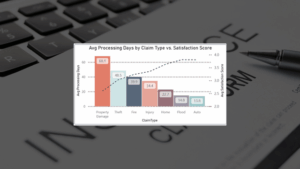Report Description
- Industry: Insurance
- Key Performance Indicator (KPI): Written Premium
- Audience: Executive, Underwriter, Producer, Actuaries. Broad user base.
“Written premium is an accounting term in the insurance business used to describe the total premiums on policies issued by an insurance company during a specific period of time regardless of what portions have been earned. Written premiums are the amount of premium charged for a policy that has already become effective.” (Reference – Society of Actuaries)
Use Case
Written premium is a fundamental insurance book of business measurement. It can be used to quantify size, growth, and stability. Nearly all entities involved with a policy will use written premium to gauge performance against goals. Organizations may also use written premium to identify key influencers such as producers, underwriters, or segments such as lines of business or programs.
Considerations
Gross or Net – Written premium can be calculated as a gross or net amount. When calculating net premiums expenses such as agency commissions, reinsurance premiums, and other expenses may be deducted.
Earned premium – Written premium represent the full premium for a policy which spans a predefined period; typically one year. At the beginning of the policy period, the majority of the premium is considered unearned while at the end of a policy period the majority of the premium is considered earned.
Premium impacting endorsements – Written premium may change over the course of a policy period. Coverages may be added and removed which will change the policy’s written premium. Written premium typically includes the entire premium including endorsements related changes in premium. When plotting written premium on a time series based on policy effective date, it is likely that historical values will change as the policy matures.





